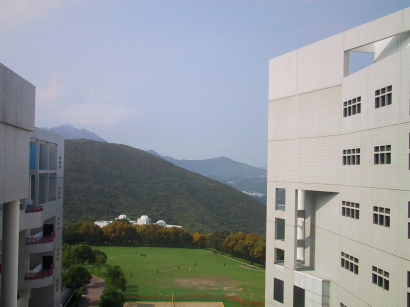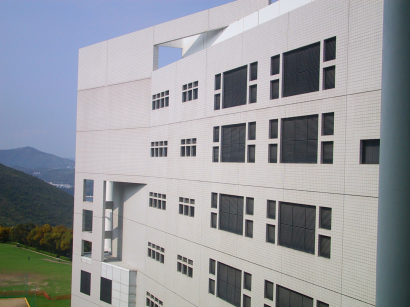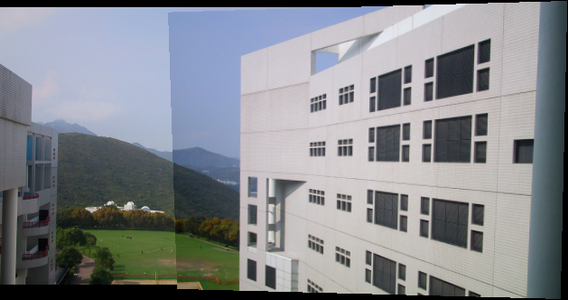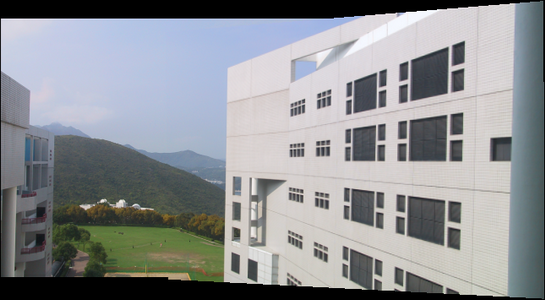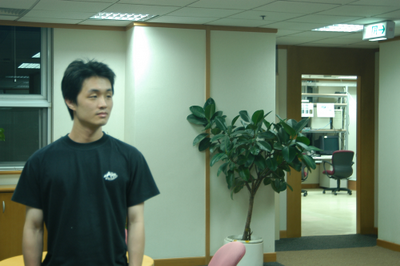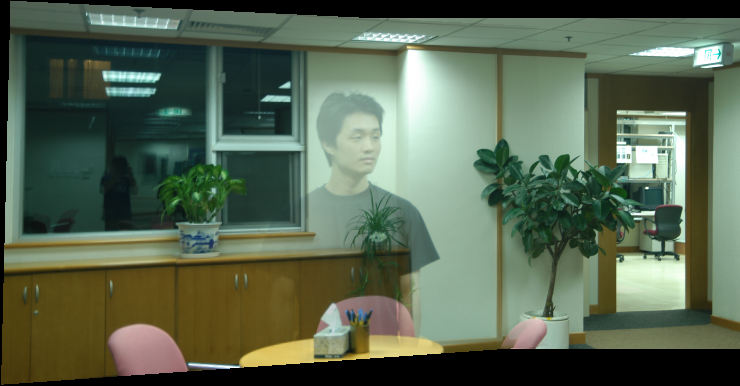|
Jiaya Jia |
Chi-Keung Tang |
Abstract ! This paper presents an image stitching method using global and local intensity alignment. The key to our modeless approach is the estimation of global and local replacement functions, by reducing the complex estimation problem to the robust 2D tensor voting in the corresponding voting spaces. No complicated model for replacement function (curve) is assumed. Subject to the monotonic constraint only, we vote for an optimal replacement function by propagating the curve smoothness constraint using a dense tensor field. Our method effectively infers missing curve segments and rejects image outliers. The first application consists of image mosaicking of static scenes, where the voted replacement functions are used in our iterative registration algorithm for computing the best warping matrix. In the presence of occlusion, our replacement function can be employed to construct a visually acceptable mosaic by detecting occlusion which has large and piecewise constant color.
Publications:
-
Image Registration with Global and Local Luminance Alignment.
Jiaya Jia and Chi-Keung Tang, 9th IEEE International Conference on Computer Vision (ICCV), October 2003, pages 156-163. (talk slides) -
Tensor Voting for Image correction by Global and Local Intensity
Alignment.
Jiaya Jia and Chi-Keung Tang, IEEE Transactions on Pattern Analysis and Machine Intelligence (TPAMI), vol. 27, no. 1, 2005.
BibTex:
@inproceedings{Jia2003stitching,
author = {Jiaya Jia and Chi-Keung Tang},
title = {Image Registration with Global and Local
Luminance Alignment},
booktitle = {ICCV},
year = {2003},
pages = {156-163}
}
@article{JIA2005stitching,
author
= {Jiaya Jia and Chi-Keung Tang},
title
= {Tensor Voting for Image Correction by Global
and Local Intensity Alignment},
journal = {IEEE
Transactions on Pattern Analysis and Machine Intelligence},
volume = {27},
year = {2005},
number = {1},
}
Motivations: Commonly, when images are taken in different viewing directions, because of the change of the lumination conditions, different exposures may be used. In image alignment, the intensity variance among corresponding pixels usually make the computation stuck into the local minimum and make it difficult to generate seamless image mosaics, as shown in the following figure. Our method takes the color variance into consideration. By applying iterative optimization, our method can correct the image intensity inconsistency caused by either exposure difference or vignette.

Image alignment results with exposure differences (global color inconsistency):
Without intensity inconsistency consideration,
misalignment and ghost effect can be seen

With intensity
correction in the iterative optimization,
misalignment and ghost effect are eliminated
